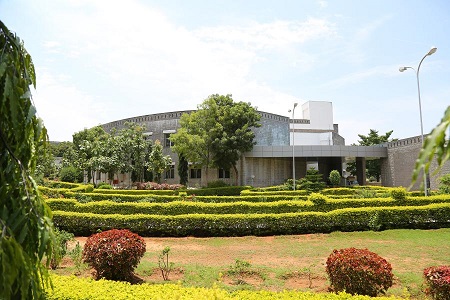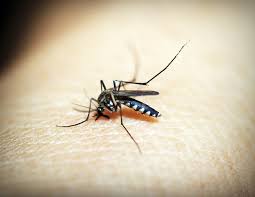Round-the-year availability of vegetables like okra (bhindi) and green peas are not only adding to the choice of consumers but also to incomes of vegetable farmers. Behind this development are efforts of Indian scientists who are developing new varieties of common vegetables, making them tasty as well was sturdy.
Vegetables are an integral part of Indian diets and essential for ensuring food and nutrition security of people. The Varanasi-based Indian Institute of Vegetable Research (IIVR), under Indian Council of Agricultural Research, is exclusively devoted to research on vegetables with focus on improving their quality and productivity.
“Your favourite bhindi masala or bhindi fry is on your dinner plate, it thanks IIVR”, says Dr Bijendra Singh, Director of the Institute. Almost all of okra grown in India is based on the parent variety developed by the institute.
"Weather and virus are not the only challenges for a farmer. Vagaries of the market also determine their profit. Many times harvested vegetables flood the market and purchase price drops. If farmers could hold out for few more days, they may get better deal,” says Dr Singh.
Earlier farmers used to grow low yielding and hard to harvest varieties of the popular vegetable. The traditional varieties grew very tall but had very few pods. Farmers had to pluck the vegetable frequently. When they waded through fields, small hairy thorns of the plant caused irritation and itching all over their body. The plants were also susceptible to Yellow Mosaic virus, a deadly infection.
Scientists at IIVR developed a new variety, which has found favour with farmers. Today farmers all across India grow hybrids made from this parent variety. “Our okra variety Kashi Pragati has till now earned a revenue of Rs 816 crore and has generated employment for about eight crore people, mostly unskilled and landless,” Dr Singh noted in an interview.
The new variety is bushy and shorter. This makes it easy to harvest the pods. The nodes where flowers and pods emerge have also multiplied. The total number of leaves, and length of the stem have reduced and biomass that got saved in the process has been diverted to production of more number of flowers. All of this results in higher yield per crop. The Institute has also made the plant resistant to Yellow Mosaic Virus using plant breeding techniques.
The story is similar with green pea or mutter. Till the Institute stepped in, harvests of crop planted at the beginning of winter were generally sweet, but those planted after January suffered from powdery mildew disease. They were also not as tasty and the yields were low. The new two varieties of peas called Kashi Uday and Kashi Nandini developed at IIVR are heat-tolerant, have higher yield and are resistant to powdery mildew disease. “Ninety percent of green peas grown in India today are those developed by this institute,” says Dr. Singh.
In addition, work is in progress on pumpkin, carrot and moringa (drumstick), which are celebrated as important vegetables by FAO as they are rich in vitamins and other nutrients. Though it may not look that appetizing, pumpkin is a rich source of beta carotene, vital antioxidants, and vitamin A. Mature uncut pumpkin can have a shelf life of more than a year. Carrot has beta-carotenes, falcarinol, Vitamin-A, dietary fibers, minerals, and antioxidants in ample quantity. Moringa, which is also called ‘paradise tree’, has seven times more vitamin C than orange and has a high level of protein. While cow milk has about 3.4% protein, moringa has almost double that level, at 6.6% protein.
The institute has, among other things, been focusing on research to ensure that farmers are able to pluck their vegetables over a period of time. “Weather and virus are not the only challenges for a farmer. Vagaries of the market also determine their profit. Many times harvested vegetables flood the market and purchase price drops. If farmers could hold out for few more days, they may get better deal,” says Dr Singh.
For instance, radish, if left in the farm for more than three days, develops pithiness and its value goes down. IIVR has developed a new variety with more leaves. “The leafy radish can be left in the field for more than ten to fifteen days and the farmers can wait for the market rates to pick up before they sell their products”, he says.
India produces 14% of world’s vegetable and IIVR has played a major role in this. The institute has developed as many as 64 new varieties and is working on 24 more. As global warming is looming large, it is also working on developing vegetable varieties that can withstand climate change.
Vegetables provide a diversified, flavoured, colourful, tasty, low caloric, and micronutrient-rich ingredients to one’s meal. They are good source of vitamins, minerals and dietary fiber. Vitamin C in fruits and vegetables promote absorption of minerals such as calcium and iron. Vegetables are a valuable source of phytonutrients that have protective functions in human body and the antioxidants present in abundance in vegetables protect cells from cancer-causing agents. Low consumption of vegetables and fruits is considered as the sixth main risk factor for mortality in the world.
An alumnus of Banaras Hindu University (BHU), Dr Singh has contributed extensively to the development of hybrid varieties of Okra, green pea, and radish and has forged national and international linkages in vegetable researches. He is a recipient of many honors and recognitions within and outside the country. He was awarded by ICAR in 2003 for his outstanding research. In 2014 he was bestowed with Dr Biswjeet Chaudhary Memorial award by the Indian Society of Vegetable Science. He has authored seven books and has published over 130 research papers. (India Science Wire)






